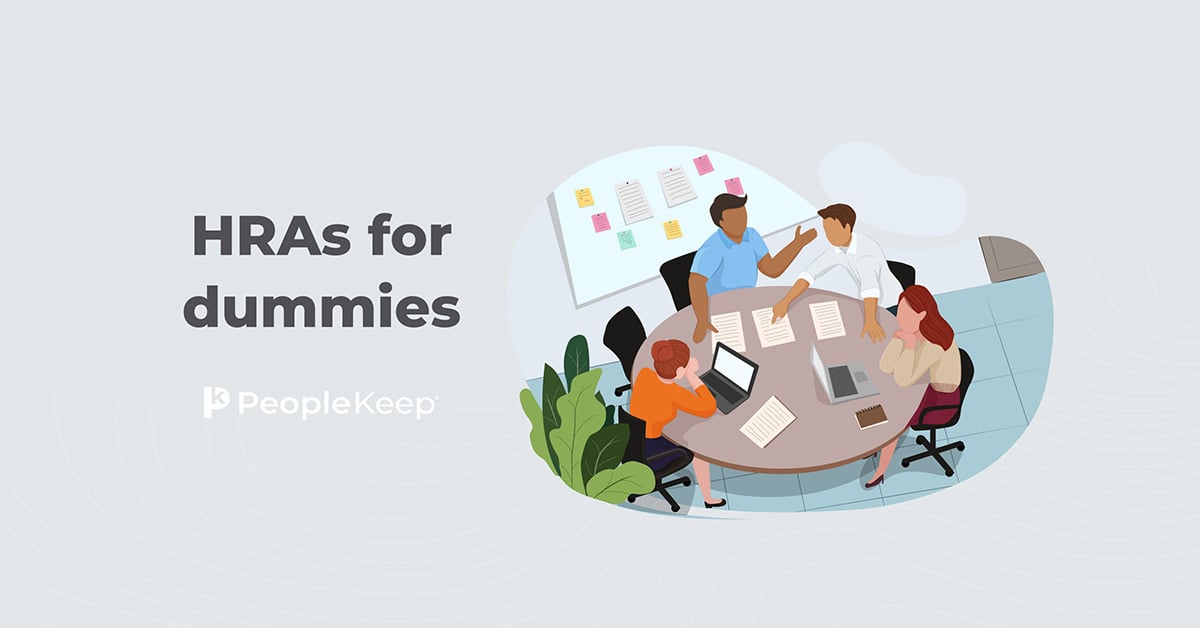What is a Health Reimbursement Account?
By PeopleKeep Team on December 4, 2018 at 10:40 AM
A Health Reimbursement Account (HRA), also known as a health reimbursement arrangement, is an IRS-approved, tax-advantaged, health benefit plan that reimburses employees for out-of-pocket medical expenses and individual health insurance premiums.
With a health reimbursement account, employers make monthly tax-free contributions to employees. Employees then purchase the health care they need, and employers reimburse them up to their allowance amount.
In this post, we'll go over an overview of how health reimbursement accounts work as well as some of their key features.
How does a health reimbursement account (HRA) work?
Health reimbursement accounts seem incredibly complicated, but they're actually really simple: they're just an system that allows employers to reimburse employees for medical expenses tax-free.
Here are the basic steps:
- The employer chooses monthly allowances for the employees. These allowances can be different based on the job function of each employee. This allowance isn't actually paid to the employees yet.
- Employees pay for their own medical care. This can be a doctor visit, individual insurance, prescription medicine, or a number of other qualified expenses.
- The employer repays the employees up to the amount of their allowances. Allowances build up from month to month assuming the employee isn't spending the full amount.
What are some key features of health reimbursement accounts (HRAs)?
Unlike a Health Savings Account (HSA), there is no limit to the amount of money an employer can contribute to an employee’s health reimbursement account.
An HRA may reimburse any expense considered to be a qualified health care expense by the IRS, including expenses for health insurance policies. Within IRS guidelines, employers may restrict the list of reimbursable expenses in any way they choose.
Health Reimbursement Account balances may roll forward from year to year. Employers can design the Health Reimbursement Account not to allow balances to rollover from one year to the next. However, limiting the rollover feature defeats a key Health Reimbursement Account advantage. Employers may allow employees to have access to their Health Reimbursement Accounts after retirement. However, employers may not pay/distribute cash or other benefit balance to any employee.
Reporting features make real-time monitoring of Health Reimbursement Account liabilities, reimbursements and utilization easy. Employers can change plan benefits at any time or cancel the entire plan at any time. Further, Health Reimbursement Account allow employers to establish plan-year maximum reimbursements for any given category of expense (e.g., dental) and to establish a maximum balance that any participant class may hold at a time.
Check out more resources
See these related articles

Health Care Reimbursement Account - What is it?
Health Care Reimbursement Account. What are health care reimbursement accounts and how to reimburse premiums and medical expenses tax free.

HRAs for dummies
A health reimbursement arrangement (HRA), sometimes called a health reimbursement account, is an IRS-approved, employer-sponsored, tax-free health benefit.

Why Health Insurance Brokers Need An HRA Administration Partner
Why Every Health Insurance Broker Should Have An HRA Administration Partner Health Reimbursement Accounts and Arrangements.


